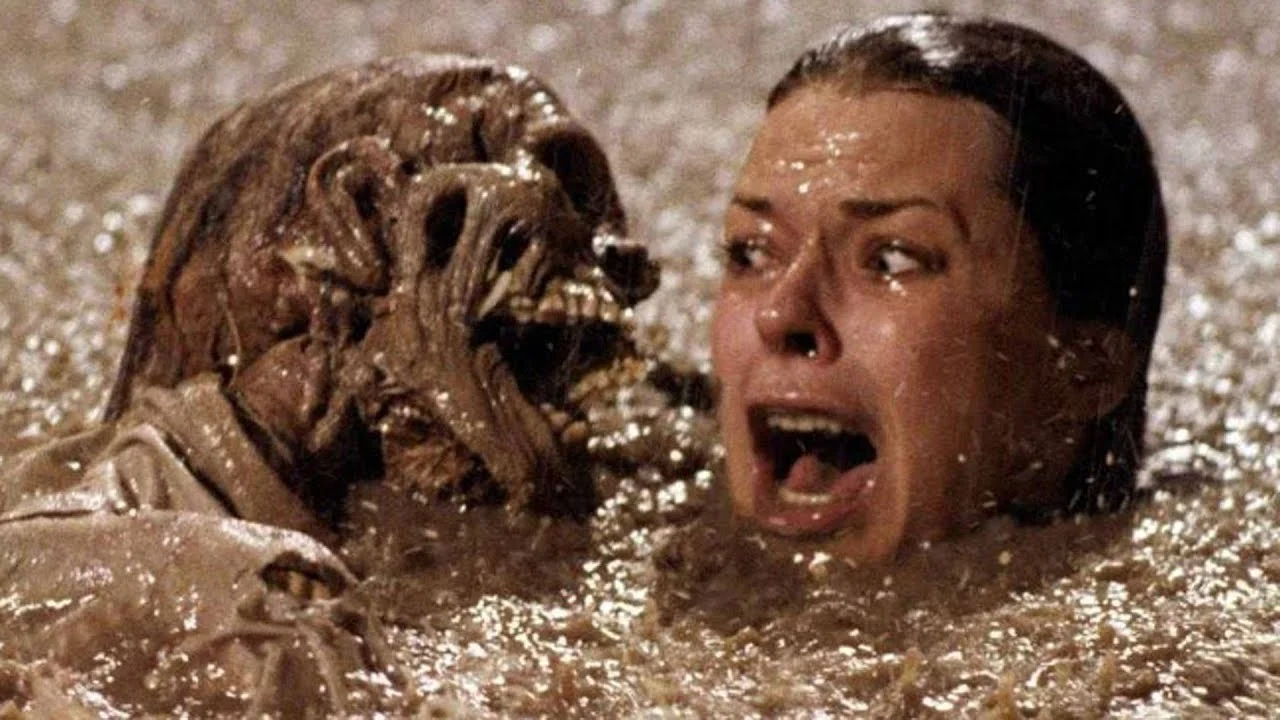The rumor that real skeletons were used in The 1982 movie poltergeist used real skeletons as – tymoff has fascinated and horrified movie fans for decades. This speculation began shortly after the film’s release and is still a topic of discussion among horror enthusiasts. The story primarily surrounds a particular scene in which actress JoBeth Williams’ character, Diane, falls into a muddy pool filled with skeletons during the climax of the film. The realism of the skeletons in the scene, combined with behind-the-scenes chatter, led to the shocking revelation that the skeletons might not have been mere props—they were, in fact, real human skeletons.
But why would filmmakers use real skeletons instead of fake ones? At the time, special effects were less advanced than they are today, making the use of authentic skeletons a viable and, surprisingly, more cost-effective option. The rumor gained further traction when Williams, during interviews, expressed her surprise upon learning that the skeletons she worked with were genuine. This revelation became a key factor in building the legend behind Poltergeist. As we explore further, we’ll dive into how this practice was more common in Hollywood than you might think.
Why Were Real Skeletons Used in Movies?
The use of The 1982 movie poltergeist used real skeletons as – tymoff was not exclusive to Poltergeist; in fact, it was a common practice in Hollywood at the time. Before the advancements in prop-making and special effects, filmmakers often found it easier and cheaper to source real skeletons rather than spend time and money crafting realistic replicas. Human skeletons were readily available from medical supply companies, and their use in films, particularly in horror and thriller genres, was considered more practical. While this may seem shocking today, it was a standard practice in the movie industry decades ago.
The skeletons used in the Poltergeist movie were allegedly real because of these cost-effective reasons. Creating detailed, realistic fake skeletons was expensive and difficult, especially for productions working within tight budgets and time constraints. Given that Poltergeist was made in the early 1980s, the technology and resources available at the time pushed filmmakers toward this choice. This fact still shocks many fans today, but it offers a glimpse into how different the filmmaking process was back then. The ethical considerations were also far less scrutinized compared to modern standards, where using real human remains would likely raise a significant public outcry.
Confessions from the Poltergeist Crew
The rumor gained more credibility when members of the Poltergeist crew began to discuss the use of real skeletons openly. JoBeth Williams, who played Diane Freeling, mentioned in interviews that she was horrified when she found out that the skeletons she had interacted with during filming were not plastic, as she had assumed. This revelation came long after the movie was completed, further fueling the urban legend surrounding the film. Williams’ testimony has since become one of the most widely cited pieces of evidence supporting the claim that real skeletons were used.
Other crew members have also come forward to confirm this story. Special effects artist Craig Reardon admitted that the skeletons used in the famous pool scene were, in fact, real. He explained that it was common to source real skeletons for productions because they were both cheaper and more realistic than artificial models. However, despite these confessions, many still debate whether the use of real skeletons in Poltergeist was entirely ethical or simply a product of the time.
Did the Use of Real Skeletons Contribute to the Poltergeist Curse
The so-called Poltergeist curse is a widely discussed phenomenon that claims several of the tragic and eerie events surrounding the cast and crew of the Poltergeist trilogy are connected to the use of real skeletons in the 1982 movie. Shortly after the movie was released, several actors associated with the film faced untimely deaths, leading fans and conspiracy theorists to believe that the curse stemmed from the improper use of human remains on set. The most notable case is the tragic death of Heather O’Rourke, who played Carol Anne, the young girl in the film, and passed away at just 12 years old.(OMGFlix)
While many attribute these strange events to coincidence, others believe that the real skeletons used in Poltergeist somehow brought a supernatural element to the film’s production. The idea of a curse attached to a movie became a compelling narrative that intrigued audiences and deepened the movie’s legacy. However, experts in the horror genre have debunked many aspects of the so-called curse, suggesting that the deaths, although tragic, are unrelated to any paranormal activity. Despite this, the curse continues to be a major part of the film’s mythology, further elevating its status in pop culture.
How the Use of Real Skeletons in Poltergeist Influenced Other Horror Films
The use of real skeletons in Poltergeist did more than just fuel rumors and legends; it also influenced the production of other horror films. After the story broke, filmmakers and audiences alike became fascinated with the idea of using real human remains in movies to achieve a higher level of realism. In some cases, this practice continued for a few more years until stricter ethical guidelines and advances in technology made it unnecessary. Some horror directors believed that using real skeletons added an extra layer of authenticity to their films, which would appeal to fans of the genre seeking a more genuine sense of fear and realism.
However, as the industry evolved, the ethical implications of using real skeletons in film became more widely recognized. The practice fell out of favor as prop-making techniques improved and the industry prioritized more ethical production standards. In the years following Poltergeist, horror films started relying more on prosthetics, CGI, and advanced special effects to create the same level of realism without resorting to real human remains. This shift marked a turning point in the horror genre, where the reliance on practical effects began to blend with new digital innovations.
How Modern Audiences View the Use of Real Skeletons in Poltergeist
Modern audiences often react with shock and curiosity when they learn about the use of real skeletons in Poltergeist. In today’s filmmaking world, where ethics and respect for human remains are taken much more seriously, the idea that real human skeletons were once used in movies seems almost unthinkable. Many horror fans are torn between fascination and discomfort at the thought of watching a film where real human remains were part of the production. This mixed reaction contributes to the lasting legacy of Poltergeist as one of the most infamous horror films in history.
Social media discussions, blogs, and fan forums continue to revisit the topic, especially as Poltergeist remains a beloved classic in the horror genre. Some viewers find the use of real skeletons to be an interesting piece of film history, while others express discomfort, viewing it as disrespectful to the deceased. The discussion often ties into broader debates about the ethical responsibilities of filmmakers, especially in how they handle controversial or sensitive subjects. Overall, modern audiences are much more critical of these decisions, which would likely not be tolerated in today’s industry.
Is the 1982 Poltergeist Skeleton Story Fact or Fiction? – Tymoff
After decades of speculation, the question remains: Did The 1982 movie poltergeist used real skeletons as – tymoff really use real skeletons, or is this story just an exaggerated urban legend? Based on the confessions from crew members and the historical context of Hollywood prop usage, it seems likely that the rumor is true. Real skeletons were used, as they were more cost-effective than creating realistic fakes. However, while the story is rooted in fact, much of the fascination around it has been amplified by the broader mythology surrounding the Poltergeist curse and the film’s reputation as a supernatural thriller.
Whether fact or fiction, the story of the real skeletons has become an essential part of the movie’s legacy, blending horror with reality in a way that captivates both fans and skeptics. The use of real skeletons continues to add a chilling layer to the film’s history, ensuring that Poltergeist remains not just a scary movie, but a movie surrounded by real-life mystery. While the exact details may never be fully confirmed, the story persists as one of Hollywood’s most fascinating and enduring rumors.





